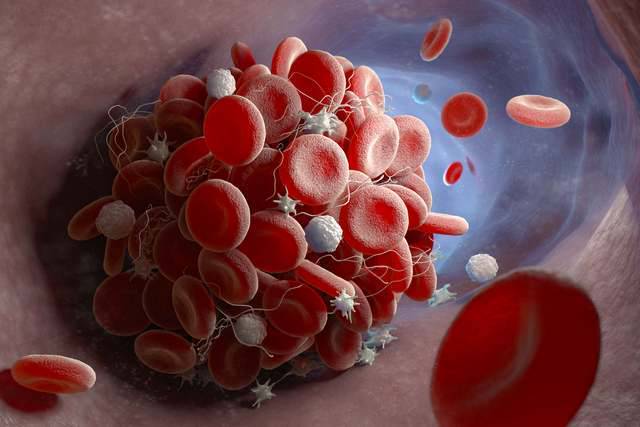Written by: May Souliman
If you ever had a bleeding wound, watch it and you will definitely notice that after a short time the blood will form a barrier to prevent more bleeding.
Blood contains an important component that works to stop bleeding through clotting, this component is the "Platelets" that we are talking about in our article
What are the Platelets?
The platelets are one type of blood-forming cells, in addition to red and white blood cells, produced from the bone marrow, which is the spongy center inside the bones such as the sternum, the vertebrae and others, where platelets live in the bloodstream for eight to ten days.
What are the platelets functions?
The platelets form a rapid blood clot that works to stop the bleeding from the affected blood vessels. When a rupture occurs in any blood vessel, the blood begins to leak out, and the platelets latch quickly to the wall of the blood vessel to stop the bleeding. After a few seconds, the Platelets' structure changes from disk-like to active spherical and they produce chemicals to bring more platelets to the place of injury, stimulating them to bind to the protein fibrin in order to increase the durability of the platelet plug formed on the injury.
What is the normal number of platelets in the human body?
The normal platelet count ranges between 150,000 to 450,000 per microliter. The low level is less than 150,000 platelets per microliter, whereas the high level ranges between 500,000 to 1,000,000 platelets per microliter.
The doctor can help in evaluating the platelets count by looking at a complete blood count (CBC) test.
The platelet count is an important factor that the doctor cannot ignore before and after surgery to predict any potential bleeding and clotting problems. It is also an important sign for those undergoing chemotherapy or radiation therapy, as these treatments may block the production of platelets in the bone marrow.
What are the types of platelet disorders?
Platelet disorders are divided into:
Disorder in number, whether increased or decreased, or in function.
- Low platelet count "Thrombocytopenia"
Thrombocytopenia is the decrease in the platelet count to less than 150,000 per microliter. It can happen either due to a lack of platelet production in the bone marrow, or their increased fracture. However, causes can vary between congenital (i.e., since birth) or acquired.
Lack of platelet production: It happens due to a problem in the bone marrow resulting from a viral infection, medications, or tumors that inhibit its activity.
Increased fracture of platelets: The immune system attacks platelets and breaks them down, as occurs in Immune thrombocytopenia, SLE, or as cases of enlarged spleen, which leads to an increase in its activity in the fracture of blood cells.
Symptoms Of "Thrombocytopenia"
- - Gum and nose bleeding
- - Menorrhagia.
- - Spots and bruises on the skin without exposure to a blow.
- - Heavy bleeding after childbirth or during an operation
- High platelet count "Thrombocythemia"
It happens when the platelet count exceeds 450,000 per microliter, and this can be a result of:
- A blood disease such as: primary thrombocythemia, which is a proliferative bone marrow disorder (myeloproliferative disease).
- Reactive thrombocythemia due to an infection or chronic inflammation, splenectomy, iron deficiency anemia, and others.
Symptoms of "Thrombocythemia"
Arterial clots: in the coronary and renal arteries.
Venous clots: in the liver or spleen, or deep vein clots in the leg or pelvis.
- Dysfunction of platelets:
As there is no disorder in their number, for various reasons platelets cannot function in the normal blood clotting process. Platelet dysfunction may lead to frequent bleeding or clots.
Treatment of platelet disorders
Treatment methods differ according to the nature of the disorder and its cause. Some cases of Thrombocytopenia do not need treatment, some may require the use of medications, and some may require a stem cell or bone marrow transplant.
As for Thrombocythemia, most cases usually require a follow-up only, while others may require medications such as aspirin.


No comments:
Post a Comment